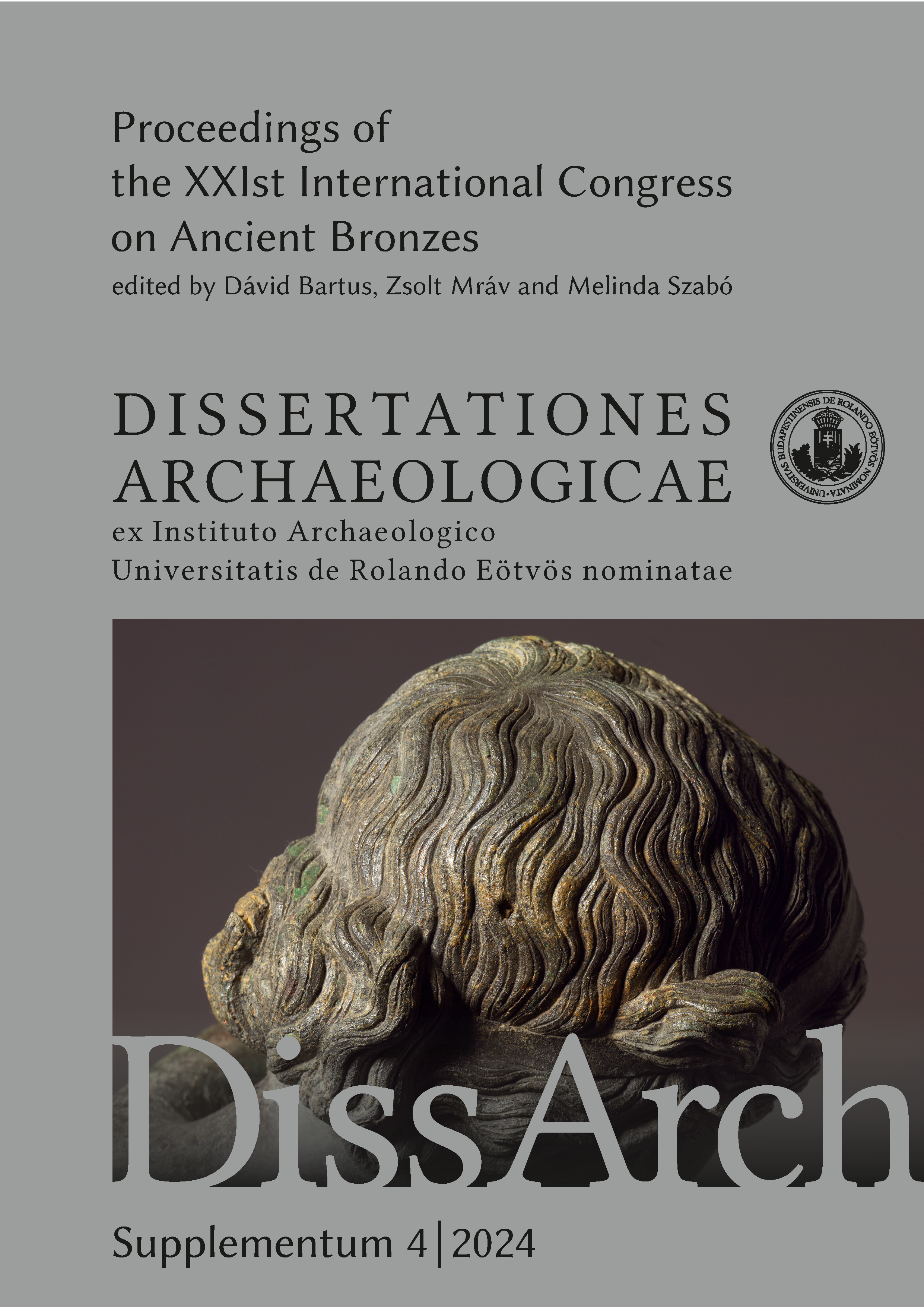Published 2024-09-30
Keywords
- Kovacs vase,
- metal vessels,
- late antiquity,
- Greek agonistics,
- Pankration
- Privatulus,
- Victorinus ...More
How to Cite
Abstract
The Kovacs Vase was first made known under scholars in Munich in 1996, but its origins and current owner are unknown. It could be shown that the pictorial scenes come from the Greek Pankration. It has now been proposed to date the Kovacs Vase to 400 AD. The successful fight of the alround-fighter Privatulus is shown in five scenes, with legends attached to the fight pictures describing the athletes in more detail. The inscriptions also indicate that it must have been an experienced and victorious all-fighter from the Green Circus Party (factiones). What is unusual is that the loser Victorinus is also mentioned by name, possibly also a successful fighter, over whom victory may have meant an outstanding achievement for Privatulus. All additions are written in a vulgar Latin that is similar to Proto-Romance and is difficult to understand. The overview and comparison of silver and non-ferrous metal jugs and vases from the 4th to 8th centuries shows that in the toreutics of this period both traditional forms and motifs have been present since the 4th century and new forms and decorative elements appear that clearly differ from the late Roman origins. The Kovacs Vase combines ‘classic’ shapes and motifs from the 6th century with innovative elements that indicate an independent, classicist development. It could be that it was made in a workshop in northern Italy. Although written sources mention gymnastic agones, no firmly dated images from the 5th century are known to date. Against this historical-archaeological background, the Kovacs Vase with its depictions and inscriptions is a unique testimony to Greek agonistics in late antiquity.


